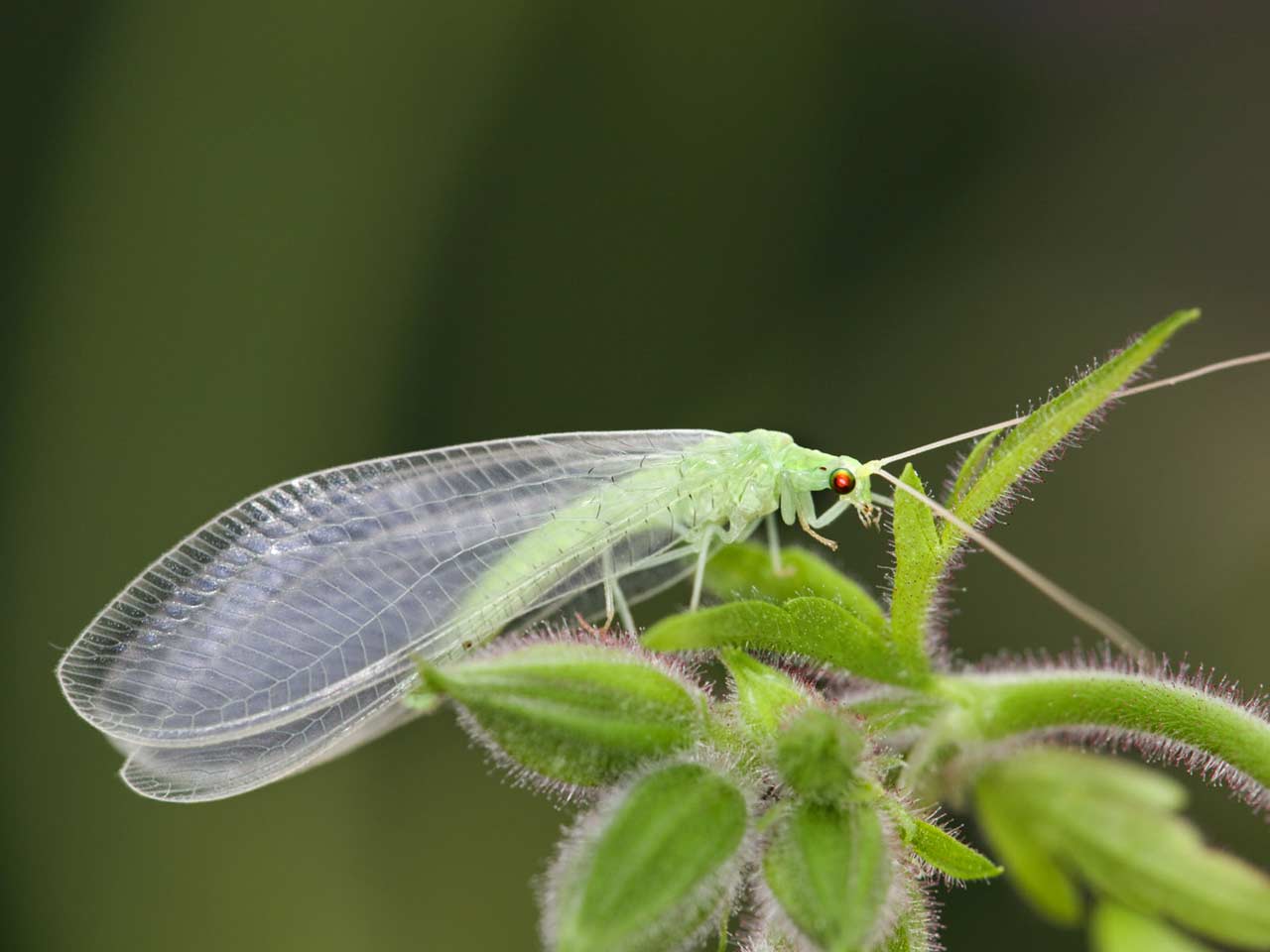Beneficial of the Month – Lacewing Order: Neuroptera

There are two families of lacewings: green lacewings (Family Chrysopidae) and brown lacewings (Family Hemerobiidae). In summer, adult green lacewings will come to porch lights, but brown lacewings are much more reclusive and are rarely seen. Both groups lay their eggs on leaves, close to potential prey. Those of green lacewings are ‘stalked’ and are usually found on the undersides of leaves, either singly or in groups, depending on species. In both families, it is the larvae that are the main predatory stage; they have large, sickle-shaped mandibles that are inserted into soft-bodied prey (e.g. aphids, small caterpillars, etc.), which are then sucked dry.

Beneficial of the Month material courtesy of NMSU ACES:
Pocket Guide to the Beneficial Insects of New Mexico
